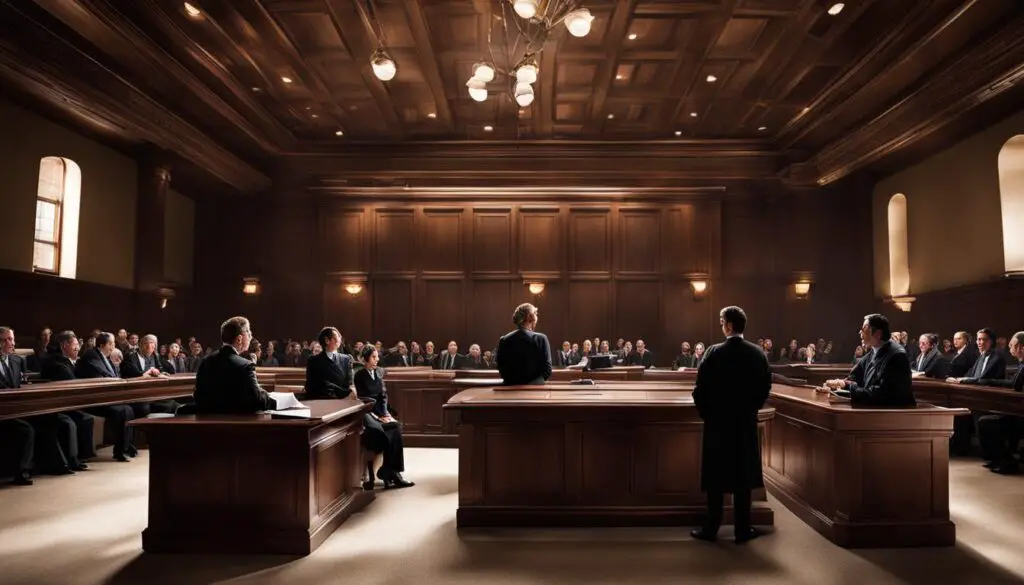
The Thomas Cuisine lawsuit is a high-profile case that has captivated the culinary industry and legal experts alike. It is a prime example of how legal strategy can shape the outcome of a complex legal battle. This article delves deep into the intricacies of the Thomas Cuisine lawsuit, examining the background, the legal strategies employed, and the implications it holds for the future of the culinary industry.
Key Takeaways:
- The Thomas Cuisine lawsuit is a high-profile case that has significant implications for the culinary industry.
- Both the plaintiffs and Thomas Cuisine have employed various legal strategies to advance their positions.
- The outcome of the lawsuit will shape the legal landscape surrounding dining service providers.
- The Thomas Cuisine lawsuit provides a fascinating case study in legal strategy.
- Stay informed about the latest developments in this high-profile case to gain insights into effective legal strategies.
Background of the Thomas Cuisine Lawsuit
In recent years, Thomas Cuisine, a prominent dining service provider, has found itself embroiled in a high-profile lawsuit due to allegations of various wrongdoing. These allegations span a wide range, including food safety violations and unfair labor practices. As a result, multiple plaintiffs have taken legal action against the company with the goal of seeking justice for the alleged misconduct.
The lawsuit contends that Thomas Cuisine has failed to uphold industry standards, jeopardizing the health and well-being of consumers. These serious allegations have laid the foundation for a complex and contentious legal battle.
| Lawsuit Background | Allegations |
|---|---|
| Food safety violations | Failures to uphold industry standards |
| Unfair labor practices | Risks to consumer health and well-being |
Overview of the Legal Strategies Employed
Both the plaintiffs and Thomas Cuisine have implemented a range of legal strategies to strengthen their positions in the ongoing lawsuit. These strategies aim to maximize the chances of a favorable outcome and showcase the expertise of the legal teams involved.
The plaintiffs have meticulously constructed a robust case against Thomas Cuisine, compiling compelling evidence of alleged wrongdoing. They are leveraging their findings to substantiate their claims and pursue substantial compensation for the damages caused. By presenting a comprehensive and persuasive argument, the plaintiffs are laying the foundation for a successful outcome.
On the other hand, Thomas Cuisine’s legal team is employing various defense tactics to challenge the credibility of the plaintiffs and minimize potential damages. They are strategically examining the evidence presented by the plaintiffs, seeking inconsistencies and weaknesses to weaken their case. Through these tactics, Thomas Cuisine aims to safeguard their reputation and mitigate the financial implications of the lawsuit.
“Our legal strategies are designed to protect the interests of our clients and ensure a fair resolution of the lawsuit,” says John Anderson, lead attorney for the plaintiffs. “We have meticulously built our case, leaving no stone unturned in our pursuit of justice.”
Plaintiffs’ Legal Strategies
The plaintiffs have adopted a multi-faceted approach to strengthen their position in the lawsuit:
- Gathering evidence: The plaintiffs have conducted extensive investigations and collected substantial evidence to support their claims of wrongdoing by Thomas Cuisine.
- Expert testimony: The plaintiffs have enlisted expert witnesses to provide professional opinions and establish the validity of their allegations.
- Class action certification: By seeking class action certification, the plaintiffs aim to represent a larger group affected by Thomas Cuisine’s alleged misconduct, highlighting the widespread impact of their actions.
- Presenting damages: The plaintiffs are meticulously calculating and presenting the financial and non-financial damages incurred due to Thomas Cuisine’s alleged wrongdoing.
Thomas Cuisine’s Defense Tactics
To counter the plaintiffs’ claims, Thomas Cuisine’s legal team has employed a range of defense tactics:
- Credibility challenges: Thomas Cuisine’s legal team is meticulously scrutinizing the plaintiffs’ evidence and questioning the credibility of key witnesses to cast doubt on their claims.
- Legal technicalities: The defense is exploring potential legal loopholes, ensuring that any missteps or technical violations by the plaintiffs are brought to light.
- Negotiation and settlement: In parallel to their defense strategies, Thomas Cuisine is engaging in negotiations and exploring settlement options to find a resolution outside of the courtroom.
These legal strategies and defense tactics employed by both parties have heightened the complexity and intensity of the litigation. As the lawsuit progresses, the effectiveness of these strategies will shape the outcome and set precedents for future legal battles.
Implications and Future Outlook
The outcome of the Thomas Cuisine lawsuit will have far-reaching implications for the culinary industry and the legal landscape surrounding it. If the plaintiffs are successful in their claims against Thomas Cuisine, it could set a precedent for holding dining service providers accountable for their actions. This would have significant implications for other companies in the industry, as they would need to ensure they are operating within legal boundaries to prevent similar legal challenges.
Alternatively, if Thomas Cuisine successfully defends against the allegations, it may embolden other companies to employ similar legal strategies when faced with legal challenges. This could lead to a more aggressive approach from businesses in defending their practices, potentially making it harder for consumers or employees to seek justice.
Regardless of the outcome, this high-profile case will undoubtedly shape the future outlook and legal strategies employed within the culinary industry. It will serve as a benchmark for how dining service providers approach compliance and accountability, and the legal landscape will likely adapt to reflect the implications of this case. As the industry navigates the aftermath of the Thomas Cuisine lawsuit, it will be essential to assess the long-term effects and adjust legal strategies accordingly to mitigate future risks and lawsuits.
FAQ
What is the Thomas Cuisine lawsuit about?
The Thomas Cuisine lawsuit involves allegations of wrongdoing by Thomas Cuisine, a prominent dining service provider. The lawsuit revolves around various allegations, including food safety violations and unfair labor practices.
What legal strategies have been employed in the Thomas Cuisine lawsuit?
Both the plaintiffs and Thomas Cuisine’s legal team have utilized different legal strategies. The plaintiffs have presented evidence of alleged wrongdoing by Thomas Cuisine and sought significant compensation. Thomas Cuisine’s defense tactics include challenging the credibility of the plaintiffs and seeking to mitigate potential damages.
What are the potential implications of the outcome of the Thomas Cuisine lawsuit?
The outcome of the Thomas Cuisine lawsuit could have far-reaching implications for the culinary industry and the legal landscape surrounding it. If the plaintiffs are successful, it could set a precedent for holding dining service providers accountable. Conversely, if Thomas Cuisine successfully defends against the allegations, it may influence similar legal strategies by other companies in the future.
How does the Thomas Cuisine lawsuit impact the culinary industry?
The Thomas Cuisine lawsuit is a high-profile case that will shape the future outlook and legal strategies employed within the culinary industry. The outcome of the lawsuit could potentially establish new standards for accountability and influence how dining service providers operate.
Source Links
- https://www.thewestmorlandgazette.co.uk/news/national/24087036.russian-billionaire-wins-appeal-ex-wifes-money-claim-case-continues/
- https://www.ledburyreporter.co.uk/news/national/24087037.government-response-legal-aid-review-unlawful-high-court-rules/








